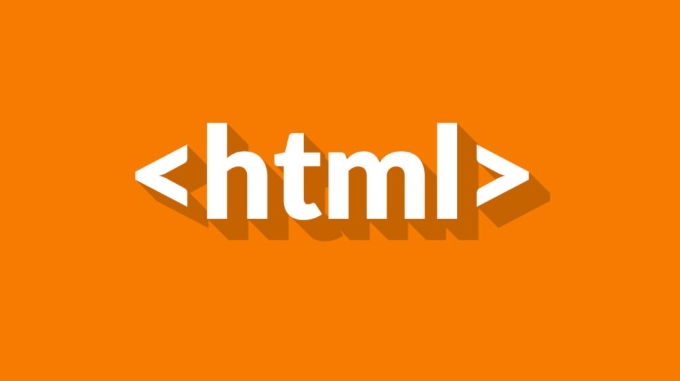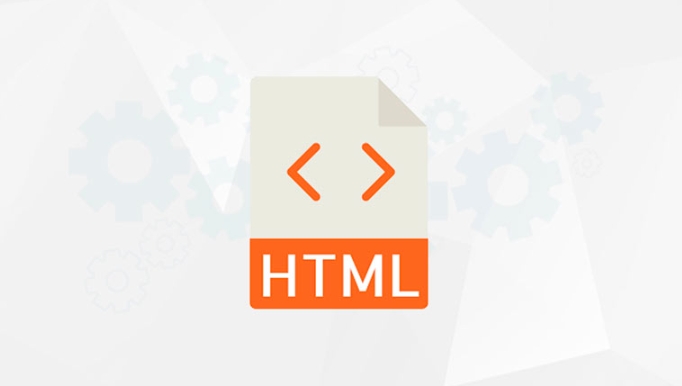The HTML dir attribute specifies text direction for proper rendering of RTL languages like Arabic or Hebrew. 1. Use dir="rtl" on the <html> tag to set the entire document’s direction. 2. Apply dir="ltr", dir="rtl", or dir="auto" to specific elements such as paragraphs, spans, or input fields to control localized text flow. 3. Use dir="auto" for user-generated content so the browser detects direction based on the first strong character. 4. Always pair dir with the lang attribute for better accessibility. 5. Avoid relying solely on CSS for text direction, as dir is more effective and semantically correct. 6. Test layouts with real multilingual content to ensure proper handling of punctuation and numbers. The dir attribute is essential for internationalization, ensuring correct layout, accessibility, and user experience without requiring complex code.

The HTML dir attribute is used to specify the text direction of an element’s content—especially important for languages that are written right-to-left (RTL), like Arabic, Hebrew, or Persian. It helps browsers render text correctly and ensures proper layout and accessibility.

You don’t need complex JavaScript or CSS to control text direction at the structural level—HTML’s dir attribute does it simply and effectively.
Where to Use the dir Attribute
You can apply the dir attribute to almost any HTML element. Common use cases include:

- Whole document (
<html dir="rtl">) - Paragraphs, headings, or inline text
- Input fields and form elements
- Tables or lists in multilingual content
The dir attribute accepts three main values:
-
ltr– Left-to-right (default for most languages) -
rtl– Right-to-left (for Arabic, Hebrew, etc.) -
auto– The browser determines direction based on content
Setting Direction on the Entire Page
To set the base direction for your entire document, use the dir attribute on the <html> tag:

<html dir="rtl">
<head>
<meta charset="UTF-8">
<title>RTL Page</title>
</head>
<body>
<p>??? ?? ?????? ??????? ????? ?? ?????? ??? ??????.</p>
</body>
</html>This tells the browser that the primary direction of the document is right-to-left. All block elements will inherit this unless overridden.
Overriding Direction for Specific Elements
You can change the direction for individual elements. For example, embedding an English quote in an Arabic paragraph:
<p dir="rtl"> ??? ????: <span dir="ltr">"Hello, how are you?"</span> ?? ????? ???????. </p>
Here, the surrounding Arabic text flows RTL, but the English quote is correctly displayed LTR.
Similarly, if you’re writing in English and quoting Arabic:
<p> He said <span dir="rtl">?????</span> with a smile. </p>
This ensures the Arabic word is rendered in the correct direction, even within LTR text.
Using dir="auto" for Dynamic Content
When you don’t know the text direction in advance (e.g., user-generated content), use dir="auto". The browser inspects the first strong character and sets direction accordingly.
<p dir="auto">????? ?? ?? ??????</p> <!-- Renders as RTL because the first strong character is Arabic --> <p dir="auto">Hello world!</p> <!-- Renders as LTR because the first strong character is Latin -->
Be cautious with auto—it only looks at the first strong directional character, so mixed or ambiguous content might not behave as expected.
Best Practices and Tips
- Always set
diron<html>for RTL languages – This affects more than text; it influences form inputs, table layouts, and some CSS behaviors. - Use
langwithdir– Combine language and direction attributes for better accessibility:<html lang="ar" dir="rtl">
-
Avoid relying solely on CSS – While
directionandunicode-bidiin CSS can control layout,diris simpler and supports accessibility tools better. - Test with real content – Some punctuation and numbers behave differently in RTL. For example, numbers in Arabic are still written left-to-right within RTL text.
Final Notes
The dir attribute is lightweight, semantic, and widely supported. You don’t need extra libraries to handle basic text direction—just use dir where needed. It’s especially crucial for internationalization and making your site usable across languages.
Basically, if your content includes RTL text, use dir="rtl" on the appropriate elements. For dynamic or mixed content, consider auto. Otherwise, you can safely rely on the default ltr.
It’s simple, but often overlooked—and getting it right makes a big difference in readability and UX.
? ??? ??? ??? HTML DIR ??? ???? ??? ?? ?????. ??? ??? PHP ??? ????? ?? ?? ??? ?????!

? AI ??

Undress AI Tool
??? ???? ??

Undresser.AI Undress
???? ?? ??? ??? ?? AI ?? ?

AI Clothes Remover
???? ?? ???? ??? AI ?????.

Clothoff.io
AI ? ???

Video Face Swap
??? ??? AI ?? ?? ??? ???? ?? ???? ??? ?? ????!

?? ??

??? ??

???++7.3.1
???? ?? ?? ?? ???

SublimeText3 ??? ??
??? ??, ???? ?? ????.

???? 13.0.1 ???
??? PHP ?? ?? ??

???? CS6
??? ? ?? ??

SublimeText3 Mac ??
? ??? ?? ?? ?????(SublimeText3)
 HTML ?? ? ?? ? ?? = '???'? ???? ??? ??? ??? ?? ?????
Jul 01, 2025 am 01:33 AM
HTML ?? ? ?? ? ?? = '???'? ???? ??? ??? ??? ?? ?????
Jul 01, 2025 am 01:33 AM
?? = "Lazy"? HTML ???? ????? ?? ????? ??? ??? ??? ???? ? ????. 1. ??? ??? ?????? ?????, ?? ?? ??? ???, ??? ? ?? ??? ?????. 2. ? ???? ?? ?? ?? ?? ???? ???? ?????. 3. JavaScript? ???? ? ?? ?? ???, ?? ??? ?? ??? ??? ???? ????. 4. ???? ???? ??? ???? ???? ?? ?? ?? ? ?? ??? ?? ??? ??? ???????. ??? ??? ?? ??? ??? ????? ??? ??? ???????.
 HTML?? ??, ?? ? ???? ??? ?? ??
Jul 05, 2025 am 02:03 AM
HTML?? ??, ?? ? ???? ??? ?? ??
Jul 05, 2025 am 02:03 AM
HTML?? ??? ??? ????? ???? ??? ?? ???, ??? ? SEO ??? ?? ? ? ????. 1. ??? ????? ??? ?? ??? ? ??? ??? ????? ?? ????????. 2. ????? ??? ???? ?? ?? ???? ???? ???? ?? ??? ?????. 3. ? ???? ??? ?? ??? ????? ??? ? ?? ?? ?? ?? ????? ?? ??? ????. ?? ???? ??? ??????? ?? ??? ??? ??? ???? ???? ??? ??? ?? ??? ???? ???????.
 ???? ? ??? HTML ??? ?????? ?? ??? ??????
Jul 01, 2025 am 01:32 AM
???? ? ??? HTML ??? ?????? ?? ??? ??????
Jul 01, 2025 am 01:32 AM
????? ??? HTML? ??? ?? ??? ??, ??? ?? ? ??? ? ?????? ???????. 1. ??? ?? ?? ??? ???? ????? HTML5 ??? ?? ?? ????? ??????. 2. ???? ??? ?? ??? ?? ??? ??? ?? ????? ??????. 3. ??? ? SEO? ?? ??? ?? ?? ??????. 4. ?? ?? ?? ???? ???? ?? ?? ?? ???? ???? ?????. ?? ??? ???? ??????. ??? ??? ??? ????? ?? ??? ??????.
 ? ???? ???? ? ???? HTML ??? ??????
Jul 03, 2025 am 02:34 AM
? ???? ???? ? ???? HTML ??? ??????
Jul 03, 2025 am 02:34 AM
? ??? ??? Core HTML ???? ???????. 1. ???? ?? ??? ?? ??? ???? ??? ???? ?? ?? ? ?? ??? ?????. 2. ??? ??? ?? ?? ? SEO? ???? ?? ?? (-), ?? () ? ?? ?? (? :)? ?????. 3. ?????? ???? ????, ????? ???? ??? ???? ????? ?? Aria-Current ??? ???? ?????. 4. ?? ?? ???? ?? ??? ?? ? ?? ??? ?????. ??? ??? ???? ???? ??? ???, ?? ?? ? ?? ?? ???? ?? ? ? ????.
 ??? CSS? ??? HTML ??? ???? ??? ??????
Jul 01, 2025 am 01:42 AM
??? CSS? ??? HTML ??? ???? ??? ??????
Jul 01, 2025 am 01:42 AM
??? HTML? ??? ??? ???? ??? ???? ???? ?? ?? ?????. ??? = "..."? ??? ?? ? ?? CSS ??? ??????. 1. ?? ?? ??? ??? ??? ?? ?? ?? CSS ??????. ? ???? ?????? ?????. ??? ?? ?? : ?? ????. ?? ?? :? ??? ??? ??????. ?? ??? ???? ?? ????? ???????. ? CSS ???? ????? ????????. ?? ??? CSS? ?? ?? ?????. 2. ??? ???? ?? ??? ?????? ?? ??? ???, ??? ??? ?? ? ?? ???? ?????. 3. ????? ? ?? ???? ?? ??? ??? ???? ???, ?? ?? ?? ? ?? ??? ?????.
 SEO? ?? ??? HTML ??? ??????
Jul 01, 2025 am 01:44 AM
SEO? ?? ??? HTML ??? ??????
Jul 01, 2025 am 01:44 AM
Thefour Mostimpactfulhtmlattributesforseoarethetitletag, altattribute, hrefattribute, and metadescription.1.theTitleTaginSectionIscrucialasItinformsUsersandsearchEnspage 'scoundents, ??, ???-event, and60 Characters
 JavaScript? ???? HTML ??? ???? ?? ? ? ?????
Jul 01, 2025 am 01:42 AM
JavaScript? ???? HTML ??? ???? ?? ? ? ?????
Jul 01, 2025 am 01:42 AM
JavaScript? DOM ??? ?? HTML ??? ???? ??, ??, ?? ? ?????. 1. document.creeLement ()? ???? ? ??? ???? accendChild () ?? insertbefore ()? ?? ???? ??????. 2. QuerySelector () ?? getElementByid ()? ?? ?? ??? ???? TextContent, InnerHtml, setAttribute () ? ?? ???? ???? ?????. 3. ??? ?? ?? ??? ?? ? ? QuerySelectorAll ()? NODELIST? ?????. 4. ??
 CDN?? ???? ? ?????? ? ? ???? ??? ? ??? ??? HTML ??? ??????
Jul 01, 2025 am 01:39 AM
CDN?? ???? ? ?????? ? ? ???? ??? ? ??? ??? HTML ??? ??????
Jul 01, 2025 am 01:39 AM
TheintegrityAttributeNsuresAresouresourcehas? notbeenmodified becryryptographichash, whilecrossoriginhandlescross-originrequeststoenablepropervalidation.1.integritychecksthefile'sauthenticityviasha-256, sha-384, orsha-512HASHASHES, BLOCKINICONCERCOTED






